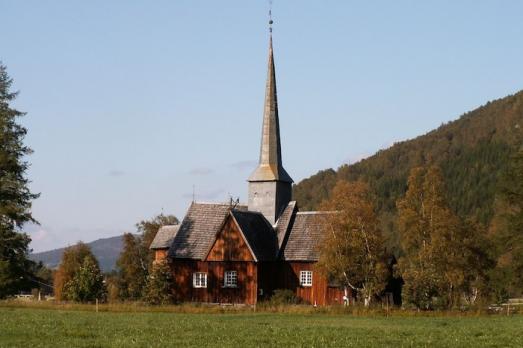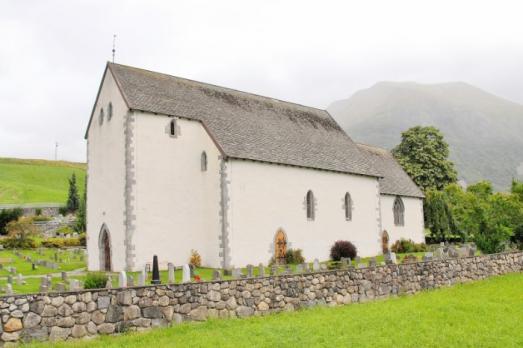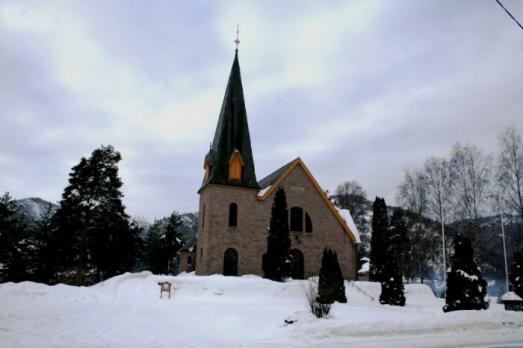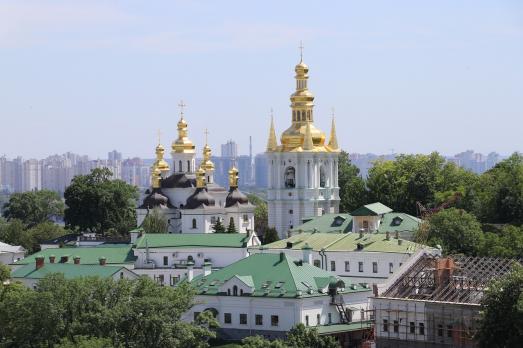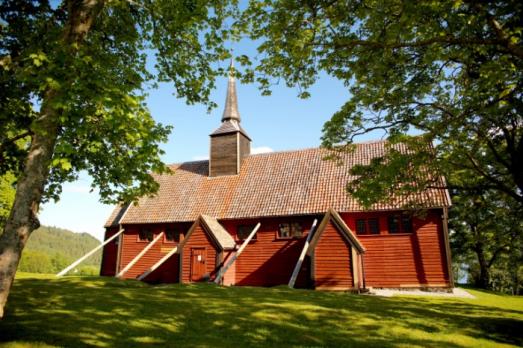
Kvernes Stave Church
Averøy, NO
The church of Kvernes is thought to have been completed between 1300 and 1500. In 1893 a new church was built next to the old one. In order to prevent the old stave church from being demolished, the inhabitants of Kristiansund collected money to buy the church. The long, low-ceilinged church hall is decorated with acanthus paintings on the red-painted walls and ceiling. Above the choir hangs a 17th-century crucifix and the monogram of Kristian VI. On the south side of the crossroads is the 17th-century pulpit in Baroque style. The beautifully carved closed pews are from the same period. The altarpiece from 1690 has a late medieval altar cabinet integrated into the main field.

